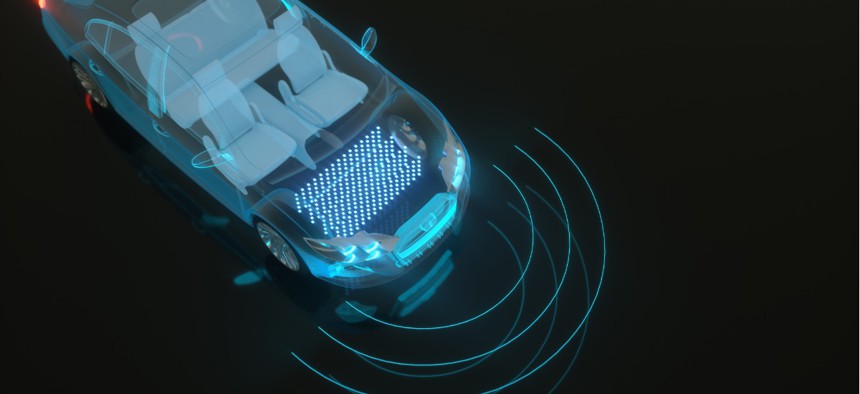Algorithm Could Improve How Self-Driving Cars Take on Narrow Streets

Just_Super/iStock.com
This kind of exchange requires drivers—human or machine—to make decisions based on largely unwritten rules of the road, researchers said.
Researchers have created a new algorithm that could help self-driving cars get around on narrow, crowded streets.
Drivers find a way to negotiate narrow streets, but not always without close calls and frustration. Programming an autonomous vehicle (AV) to do the same—without a human behind the wheel or knowledge of what the other driver might do—presented a unique challenge for researchers at the Carnegie Mellon University Argo AI Center for Autonomous Vehicle Research.
“It’s the unwritten rules of the road, that’s pretty much what we’re dealing with here,” says Christoph Killing, a former visiting research scholar in the School of Computer Science’s Robotics Institute and now part of the Autonomous Aerial Systems Lab at the Technical University of Munich. “It’s a difficult bit. You have to learn to negotiate this scenario without knowing if the other vehicle is going to stop or go.”
Killing teamed up with research scientist John Dolan and PhD student Adam Villaflor to crack this problem.
The team believes their research is the first into this specific driving scenario. It requires drivers—human or not—to collaborate to make it past each other safely without knowing what the other is thinking. Drivers must balance aggression with cooperation. An overly aggressive driver, one that just goes without regard for other vehicles, could put itself and others at risk. An overly cooperative driver, one that always pulls over in the face of oncoming traffic, may never make it down the street.
“I have always found this to be an interesting and sometimes difficult aspect of driving in Pittsburgh,” Dolan says.
Autonomous vehicles have been heralded as a potential solution to the last mile challenges of delivery and transportation. But for an AV to deliver a pizza, package, or person to their destination, they have to be able to navigate tight spaces and unknown driver intentions.
The team developed a method to model different levels of driver cooperativeness—how likely a driver was to pull over to let the other driver pass—and used those models to train an algorithm that could assist an autonomous vehicle to safely and efficiently navigate this situation. The algorithm has only been used in simulation and not on a vehicle in the real world, but the results are promising. The team found that their algorithm performed better than current models.
Driving is full of complex scenarios like this one. As the autonomous driving researchers tackle them, they look for ways to make the algorithms and models developed for one scenario, say merging onto a highway, work for other scenarios, like changing lanes or making a left turn against traffic at an intersection.
“Extensive testing is bringing to light the last percent of touch cases,” Dolan says. “We keep finding these corner cases and keep coming up with ways to handle them.”
The team presented its research at the International Conference on Robotics and Automation.
This article was originally published in Futurity. It has been republished under the Attribution 4.0 International license.



